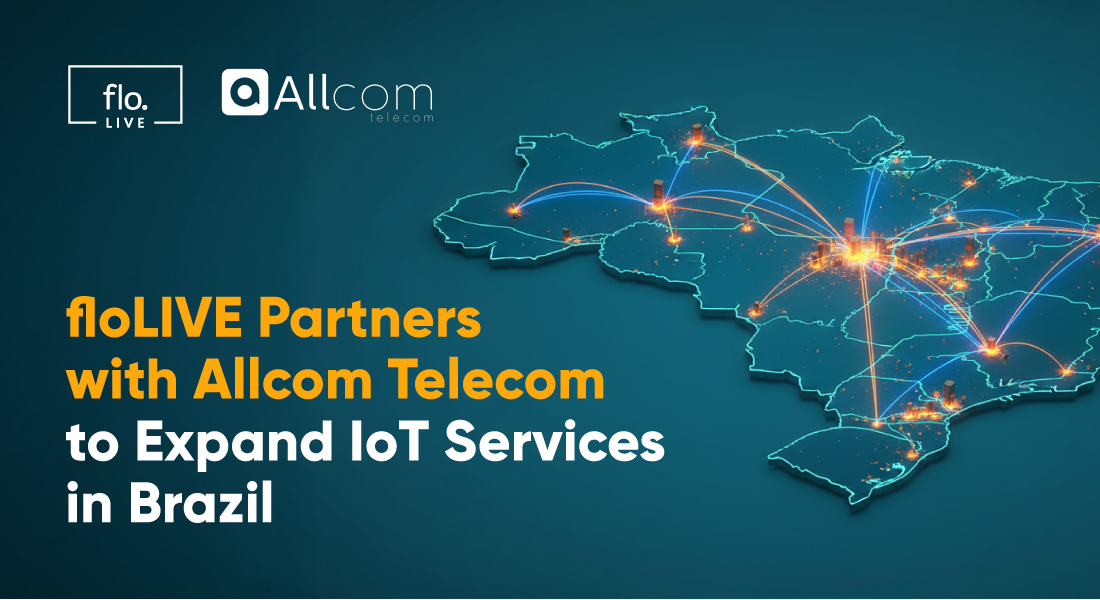Page Contents
2024 Predictions: Swapping Insights with floLIVE and Transforma Insights During Webinar

Page Contents
With the end of 2023 just around the corner, analysts, organizations, and industry experts begin predicting the technology and trends that will dominate the new year. With many contenders – and several going through the hype cycle – it is an interesting time to speculate what will be a boom and what might bust. floLIVE and Transforma Insights are hosting an interactive webinar on December 12 to discuss some of the key contenders for 2024, including:
Artificial Intelligence and the Hype Cycle
The second half of 2023 was dominated by conversations surrounding artificial intelligence (AI) and its impact on technology, commerce, and society. As the narrative has continued, there has been a push-pull on whether AI will become a leading technology that supersedes all others or a companion technology that supports the current strong infrastructure and ecosystem.
The reach of AI can be more procedural, like facial recognition in airports, or as far-reaching as robotics in manufacturing, healthcare, and beyond.
Machine learning (ML) falls under the umbrella of AI and is a more algorithmic approach to data processing, whereas AI is more about putting a “thing” to action in a human-like way. It has been argued that AI and the speculation around it has diluted the conversation about the power of ML and what it can accomplish for organizations through optimization, error reduction and more. ML allows machines to be trained through algorithms and self-correct when new data is introduced, but that is the limitation of the logic and for many use cases, that is powerful and revolutionary. Taking it further with AI simply does not add value in these cases, which begs the question, just because AI can, should it?
AI systems cannot operate independently as they require robust and stable cellular connectivity. However, such connectivity is not always available worldwide. While Mobile Network Operators (MNOs), IoT service providers, and AI-driven IoT device manufacturers are working towards providing reliable connectivity, there is still room for improvement in enabling AI and Machine Learning on IoT devices that use cellular connectivity. Among the solutions being considered is the use of multi-IMSI SIMs, which ensure that devices stay always connected.
The Latest and Greatest in Cellular Technology
Moving through the hype cycle into a more settled discussion is 5G. When 5G was first standardized by the 3GPP, the hype reached a fever pitch in its capabilities. Use cases would be lightning-fast and support incredible use cases of autonomy, but the progression of 5G has been much slower and measured.
This is partly because the new radio wave of 5G needs to be supported by infrastructure and the spectrum freed by the sunsetting of 2G and 3G networks globally. The earliest releases of 5G have been Non-Standalone (NSA), which has leveraged the 4G LTE infrastructure. This has increased speed for 5G and helped build backward compatibility, so legacy turndowns from LTE to 5G won’t be an issue.
But it will not be until widespread infrastructure is built by carriers to support 5G Standalone (SA) that the true capabilities of 5G will be seen. The ROA (return on assets) on building 5G SA has also been a mixed bag, with the challenge of monetizing 5G creating a hurdle.
The high cost of building the infrastructure for the latest cellular generations has increased exponentially. While building 2G infrastructure cost carriers approximately $100 billion, 5G is anticipated to be around $275 billion. While comparing 2G and 5G is like comparing apples to oranges, the infrastructure expenditure for 4G did not result in a significant revenue increase for Mobile Network Operators. In fact – some even saw a decrease in revenue.
Mobile Network Operators capture an ROA of 2 to 3 percent, compared to a cloud services provider of 17 to 20 percent, which fortifies the challenge of making a large capital outlay, especially when 5G SA demands are only just mounting.
The New Spin on Edge Computing
The idea of computing occurring close to the device level is not new and, in fact, was how early data processing happened. It was not until the birth of the internet that distributed computing took the processing to the server and then, as data demand grew, to the cloud. With data volumes continuously expanding, the issue of latency has turned the tides back toward putting processing close to the device level.
Not only can this reduce latency and improve performance, but it can also reduce the OpEx associated with cloud hosting and give the organization more ownership and visibility.
Moreover, by running AI and ML models at the edge, real-time applications can benefit from dramatic improvements. This enables new services and businesses to emerge, and digitalization of modern applications that require processing larger amounts of data, even when it contains rich media, becomes possible. Connectivity that matches edge computing is necessary for IoT devices that utilize AI/ML. It is believed that global cellular networks employing multiple strategic cores networks worldwide can help deliver faster data processing closer to the source.
Join the Interactive Webinar on December 12
floLIVE CEO Nir Shalom and Transforma Insights Founding Partner Matt Hatton will guide the conversation on 2024 technology and trends in a December 12 webinar at 10 a.m. ET / 3 p.m. GMT, but this webinar will have a new twist.
Attendees will be asked to use their smartphones to answer questions and polls and contribute to graphs, word-clouds, and more to help build a real-time prediction of what 2024 will look like. It’s a great opportunity to share your opinion and see live results on how others think the technology of 2024 will shake out.
Be sure to register now to secure your spot and we look forward to hearing your thoughts on December 12.

Join Our Newsletter
Get the latest tips and insights in our monthly newsletter.










